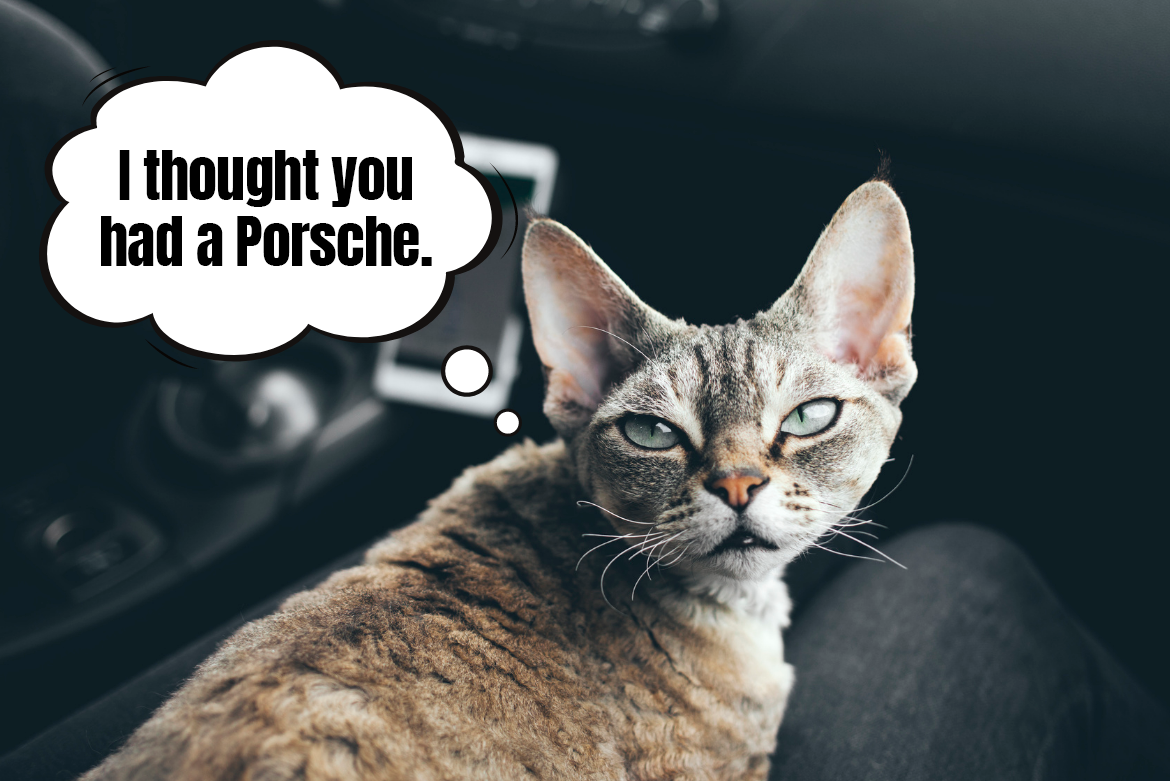All fluffs on board! Organising a car ride with a cat can be quite the challenge and it’s worth getting ready for it properly. It doesn’t matter if you’re rushing to the vet, collecting your cat from the breeders or planning a trip to visit your family on Christmas – for our furry friends, every journey is a stressful event. On top of that, we can’t forget about safety and keeping the cat secure in a carrier, not running freely on the floor and seats. Want to know how to plan for any cat trip and get your kitty ready for a car ride? Read to the end, and we’ll try to get your ready for upcoming travels.
Do cats like car rides?
Among cats, just like with dogs and humans, there are individuals who love to travel and ones that would rather stay home at all cost.The myth that all cats hate car rides is, however, quite far-fetched! We know that the key to our kitties’ happiness is having their own territory, but there are cats who stay completely indifferent to getting into the carrier and travelling. Some would even love to look out the window if they could, although we must remind you that cats should always stay in a carrier when the car is moving. It’s a matter of both their comfort and safety. If you’re planning a long journey, think about making a few stops on the way and letting your kitty out (inside a closed car), giving them access to a litter box, food and water and allowing them to stretch their paws before heading back on the road.
Why do some cats love the car and others get so stressed even on the shortest of rides? Cats’ aversion to travelling might come from the overwhelming noise (highway speed combined with noisy winter tires, wind and traffic can be unbearable even for us, hoomans), but also from motion sickness! As a well-read cat guardian you should remember that animals may feel unwell on the road. They’ll let you know by meowing, panting or even defecating and vomiting (our Luis had such reactions, but they faded away as we had to make trips to the vet more often). It’s very obvious how stressed cats can get.
When a cat pants like a dog: the causes of restless breathing
How to calm a cat down while travelling?
Cats that are used to travelling are usually ones that did it a lot from a very young age – practice makes perfect, after all! More exposure to car rides can also help with their motion sickness and lower their levels of stress on the road. We can usually see less signs of stress with purebred cats attending cat shows regularly. This doesn’t mean that you should start driving your cat around to desensitise them to the car – if your kitty doesn’t have the traveller gene and prefers to stay on his home ground, don’t force unnecessary stress on your tiny friend and, if a journey is necessary, make it as comfortable as possible. It is still worth it to get your kitty used to the car from a young age. Regular vet visits are a must have, so the sooner you help your cat overcome the car stress, the less scary the visits will get.
The process of calming your cat down during your travels will depend on their individual preferences and their relationship with you, our dearest fabCats. Some kitties will get calmer hearing their hooman’s voice, while others will get even more stressed and it’s better to leave them alone. It’s also worth considering sitting in the back with the cat, in their sight, having the ability to pet them through the carrier door. If your kitty is particularly stressed, you can cover their carrier with a blanket, cutting off some visuals and sounds – for our ginger boy Figo it worked wonders and calmed him down immediately. In rare situations you might even want to consider giving your cat light sedatives, although we suggest doing it under veterinary supervision. Also, if your cat reacts well to pheromones (check it before you use them in the car), you can spray the seats lightly 15 minutes before heading out and let the cat smell them from the moment you put the carrier in the car.
Remember that cats are very sensitive to smells, which is why it’s always a good idea to sneak in their favourite blanket, pillow or a toy into the car to make it feel like a part of their safe territory.
Getting your cat ready for a car ride: things to remember
First and the most basic rule we need to mention, as far as travels with cats go, is to limit your car rides to the necessary minimum. However, we are well aware that not everyone has the chance to find a cat sitter for Christmas or holidays and leave the cat in his or her own territory. If that’s you, fabCats, try getting your furry friend used to frequent journeys, starting with a carrier training.
How to get a cat used to their carrier?
If you don’t want your kitty hiding behind the couch every time they hear you open the carrier door, make sure they know it as a natural part of their habitat. At least one, if not all travel bags and carriers that you have should be available to the cat at all times, making a sweet hideout and a perfect sleeping spot. Lay a favourite blanket or pillow inside – it’s the ultimate scent soaker and will surely make your kitty welcome the cosy corner with joy. And once they feel at ease entering the carrier and sleeping inside, you can train your cat further by closing the doors for a couple of minutes at a time and giving treats or pets as a reward.
A long journey with a cat
As far as shorter trips go (not longer than an hour or two), the prep stage can be limited to taking away your kitties food and water a couple hours before the ride. It allows the cat to go to the litter box and feel at ease during the trip. If the journey is longer, however, you should consider making a few stops on the way. Pack up some travel bowls, a water bottle and some food. Leave a litter box on the floor behind the passenger’s front seat. Allow your cat safe access to food and toilet during pee breaks and, to keep the car clean, get a pee pad inside the carrier in case your cat can’t wait until the stop or feels motion sick on the way.
Safety in the car
Since we already mentioned the carrier and kitty travel bag, we must turn your attention, fabCats, to the safety of cat travels. We’ve seen many pictures of happy cats watching the road sitting in their hooman’s lap and you know what? Although it might look cute and perfectly safe in the picture, a cat should never be let loose (or even on a leash) inside a moving car. A scared cat might and will try hiding under the seats or the driver’s legs, causing possible danger. Getting them back into the carrier won’t be easy either. And what if, *knock on wood*, you get into an accident? We don’t even want to think what could happen to a cat that is not secured in any way.
If possible, put the carrier on the floor, preferably behind the passenger’s seat (to leave the driver some space to sit comfortably). If that’s not possible, strap it in with seatbelts on the back couch.
Among some other products that may come useful while travelling with a cat, you might consider getting a harness and a leash. It’ll get especially handy if you’re planning on letting your cat out of the carrier once you stop for a break – you’re not only protecting your cat from escaping if you accidentally leave your car open, but you’re also not allowing them to hide under the seats or in the boot for when you have to get going. Don’t use the leash to sit your cat down outside the carrier and allow them to ride strapped down with seatbelts – it’s not too safe. Harness and leash should only be an additional safety and it’s better if the cat is used to them before you actually use it on the road.
What can you tell us about your traveller kitties, our fabCats? Do they protest as soon as they see a carrier, or maybe wait by the door as soon as they hear you packing the bags? We can’t wait to hear your stories in the comments and find out if, among our readers, there are some kitties that were born to travel.




